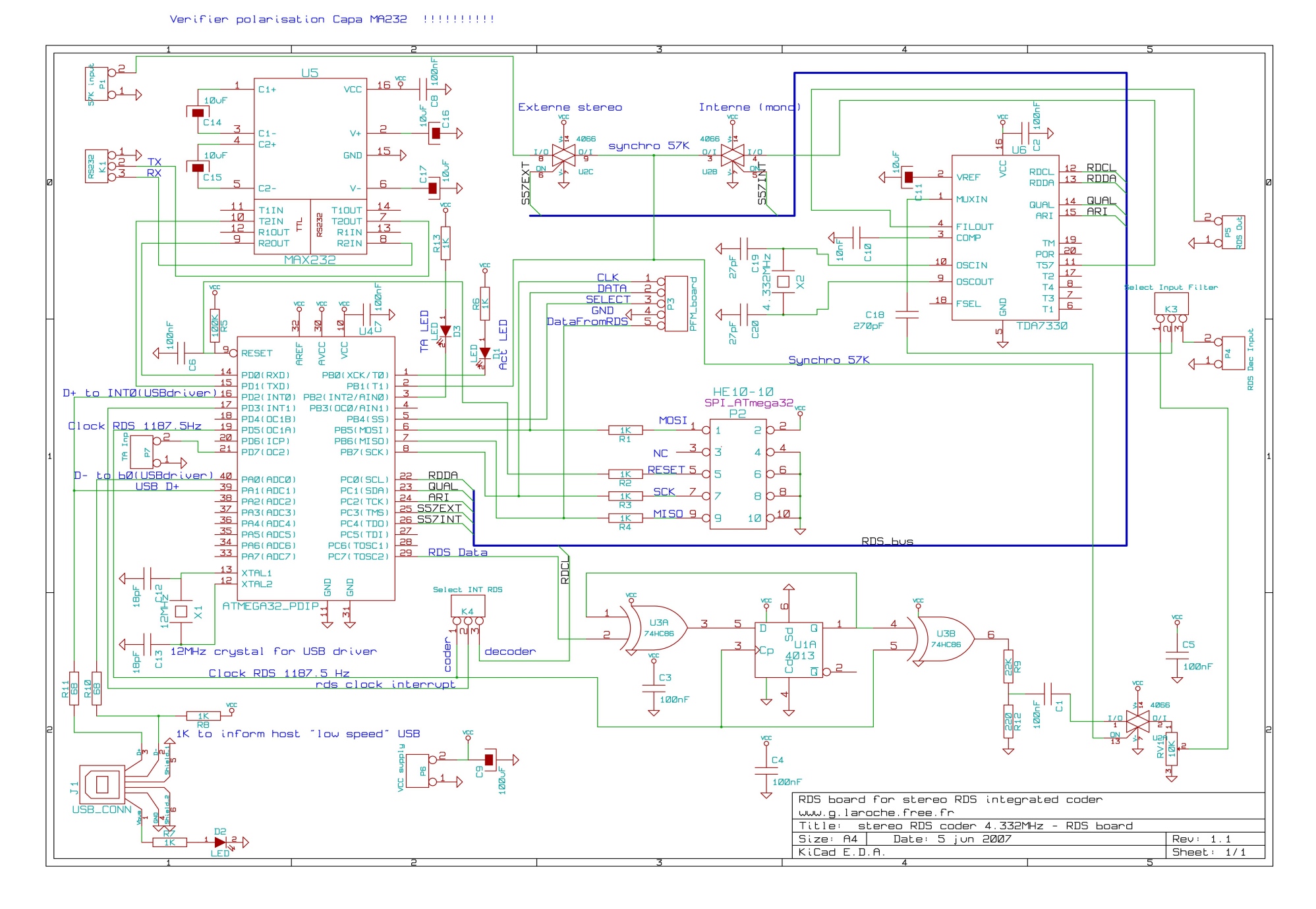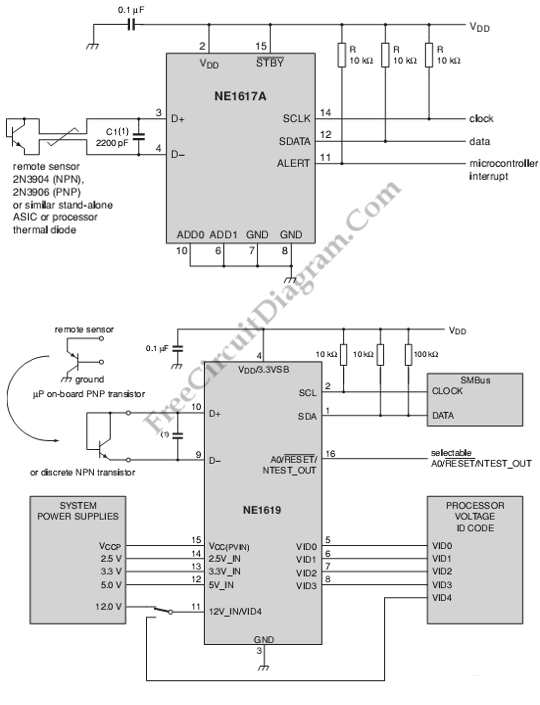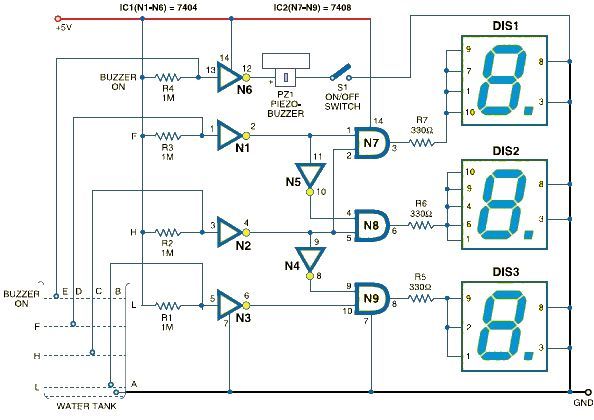
USB RDS Coder Board using ATmega32

This board is an RDS coder utilizing an ATMEL AVR ATmega32 microcontroller. It can be controlled via an RS232 link, USB interface, or SPI. TA data is displayed with an LED and can be controlled through hardware input, RS232, or USB, while SPI functionality is not yet implemented.
The RDS (Radio Data System) coder is designed to encode and transmit additional data alongside traditional FM radio broadcasts. The core of the system is the ATMEL AVR ATmega32 microcontroller, which provides the necessary processing power and control capabilities. This microcontroller features a 16 MHz clock speed, 32 KB of flash memory, and various input/output pins that facilitate interfacing with other components.
Control options for the RDS coder include RS232, USB, and SPI. The RS232 interface allows for serial communication with external devices, enabling configuration and data transmission. The USB interface offers a more modern and versatile connection option, allowing for easier integration with computers and other USB-capable devices. The SPI (Serial Peripheral Interface) is mentioned as a future enhancement, which will enable high-speed communication with other peripherals.
The board's functionality includes the display of Traffic Announcement (TA) data via an LED indicator, providing a visual signal to users when a TA message is being transmitted. The control methods for this data display include direct hardware input, which allows for manual operation, as well as through the RS232 and USB interfaces for automated or remote control.
Future enhancements for the board could include the implementation of the SPI interface, which would allow for additional peripheral connections, expanding the overall functionality and flexibility of the RDS coder. This could also enable the integration of more advanced features, such as real-time data processing and improved user interface options.This board is a RDS coder using an ATMEL AVR ATmega32. This board can be controled by a RS232 link, USB interface or SPI. TA data is displayed wiyth a LED and can be controled by : - Hardware input - RS232 - USB - SPI (not yet implemented).. 🔗 External reference
The RDS (Radio Data System) coder is designed to encode and transmit additional data alongside traditional FM radio broadcasts. The core of the system is the ATMEL AVR ATmega32 microcontroller, which provides the necessary processing power and control capabilities. This microcontroller features a 16 MHz clock speed, 32 KB of flash memory, and various input/output pins that facilitate interfacing with other components.
Control options for the RDS coder include RS232, USB, and SPI. The RS232 interface allows for serial communication with external devices, enabling configuration and data transmission. The USB interface offers a more modern and versatile connection option, allowing for easier integration with computers and other USB-capable devices. The SPI (Serial Peripheral Interface) is mentioned as a future enhancement, which will enable high-speed communication with other peripherals.
The board's functionality includes the display of Traffic Announcement (TA) data via an LED indicator, providing a visual signal to users when a TA message is being transmitted. The control methods for this data display include direct hardware input, which allows for manual operation, as well as through the RS232 and USB interfaces for automated or remote control.
Future enhancements for the board could include the implementation of the SPI interface, which would allow for additional peripheral connections, expanding the overall functionality and flexibility of the RDS coder. This could also enable the integration of more advanced features, such as real-time data processing and improved user interface options.This board is a RDS coder using an ATMEL AVR ATmega32. This board can be controled by a RS232 link, USB interface or SPI. TA data is displayed wiyth a LED and can be controled by : - Hardware input - RS232 - USB - SPI (not yet implemented).. 🔗 External reference





